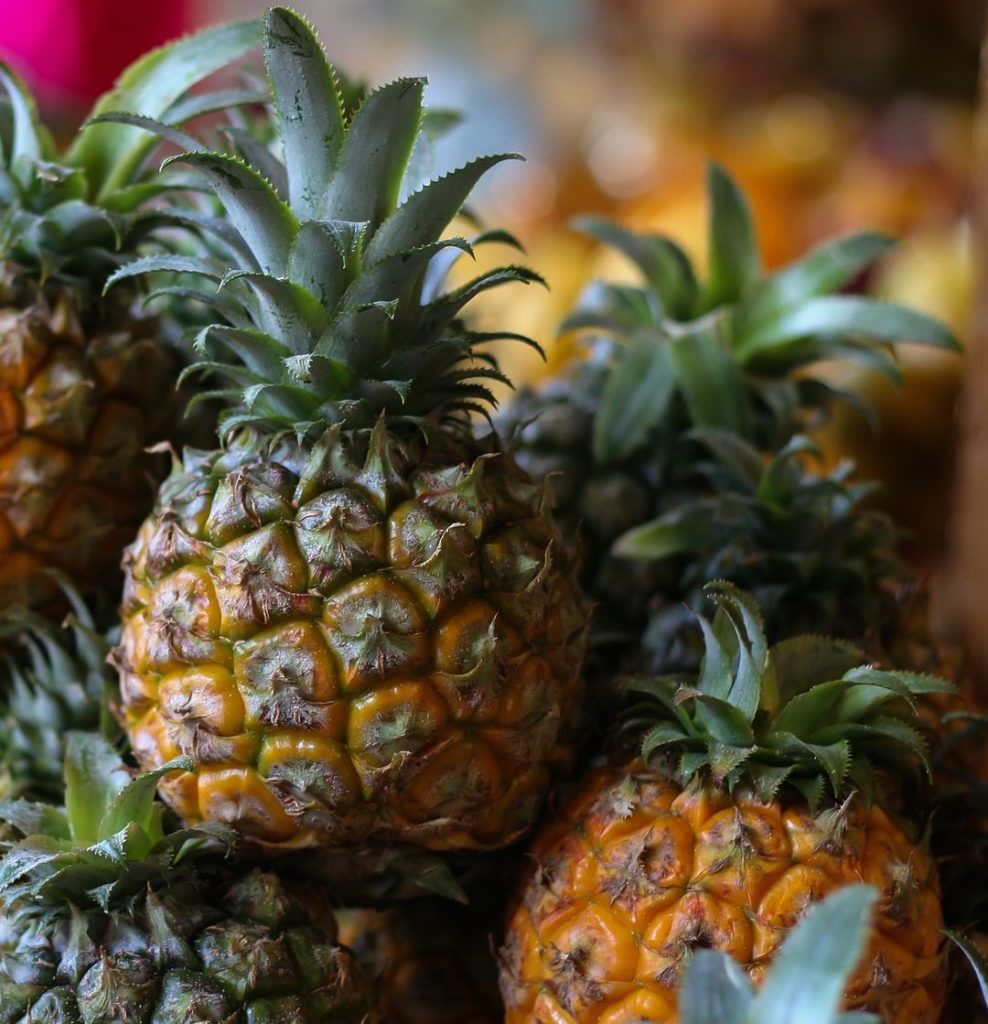
Antigua and Barbuda
Pineapple
Ananas comosus

General Description/Cultural Significance
It is thought that the Arawak Indians brought the first pineapples to Wadadlii, now Antigua and Barbuda, more than a thousand years ago. The cultivation of those pineapples in the soil, temperature and climate of the island evolved into the diminutive Antigua Blacks, with the unique qualities of low acidity, refreshing crisp texture and extreme sweet flavor. The Antigua Black Pineapple, a part of all the islanders’ traditions, has been grown by small farmers all over Antigua for centuries and sold in roadside stands. The country is proud that that rare variety is now known world-wide and the time-perfected fruit is an official symbol that is the crown atop the Antiguan coat of arms. However, very little of the harvest is exported. The pineapple is mostly enjoyed by Antiguan Barbudans and visitors to the islands. Antigua Blacks, like the favorable climate and beautiful coastline, is a draw for the tourism that accounts for more than half of the Caribbean island’s income.
Even when ripe and at peak flavor, the Antigua Blacks have a dark green exterior with golden-yellow flesh with an edible core. In the late 1960s, the government-owned Cades Bay Pineapple Station on the southwest coast of the island was created, where 20 acres of the pineapple are grown.
Climate Change/Conservation Status
Antigua and Barbuda are surrounded by mangroves, coral reefs and sea-grass beds. These ecosystems sustain the country’s sandy beaches and fishery resources and serve as protective barriers during tropical storms. However, low-elevation areas of these coral islands are experiencing sea level rise and saltwater intrusion that often damage crops.
Antigua and Barbuda also use desalinization to meet their water needs. Climate variability and change pose significant threats to an already stressed water situation. Limited reservoir size makes many areas vulnerable to floods and landslides during extreme rain events, making commercial farming and other businesses less profitable. For example, in 2017, Irma and Maria, both category 5 hurricanes, two weeks apart, destroyed or damaged 95% of all the structures on Barbuda. As sea levels are anticipated to rise 17 to 44 centimeters (6.69 to 17.32 inches)by 2050 and will combine with flooding from increased tropical storm strength, infrastructure and population centers are at increasing risk. Coastal ecosystems are at risk also due to increased ocean temperatures, and ocean acidification.
Even though the Antigua Blacks and other pineapples are naturally drought resistant, more frequent droughts, another ramification of climate change, is changing the terroir. Even small changes effect taste in such a special variety of pineapple where the right amount of rainfall is very important. In addition to impacts on pineapples and decreased productivity in agriculture in general, increased temperatures make storing seeds more difficult, which impacts strategic planning for resiliency.
Alternate Names
Antigua black pineapple
Sources
American University of Antigua, 2016. Antigua Black Pineapple: The World’s Sweetest. AUA College of Medicine. [website]

